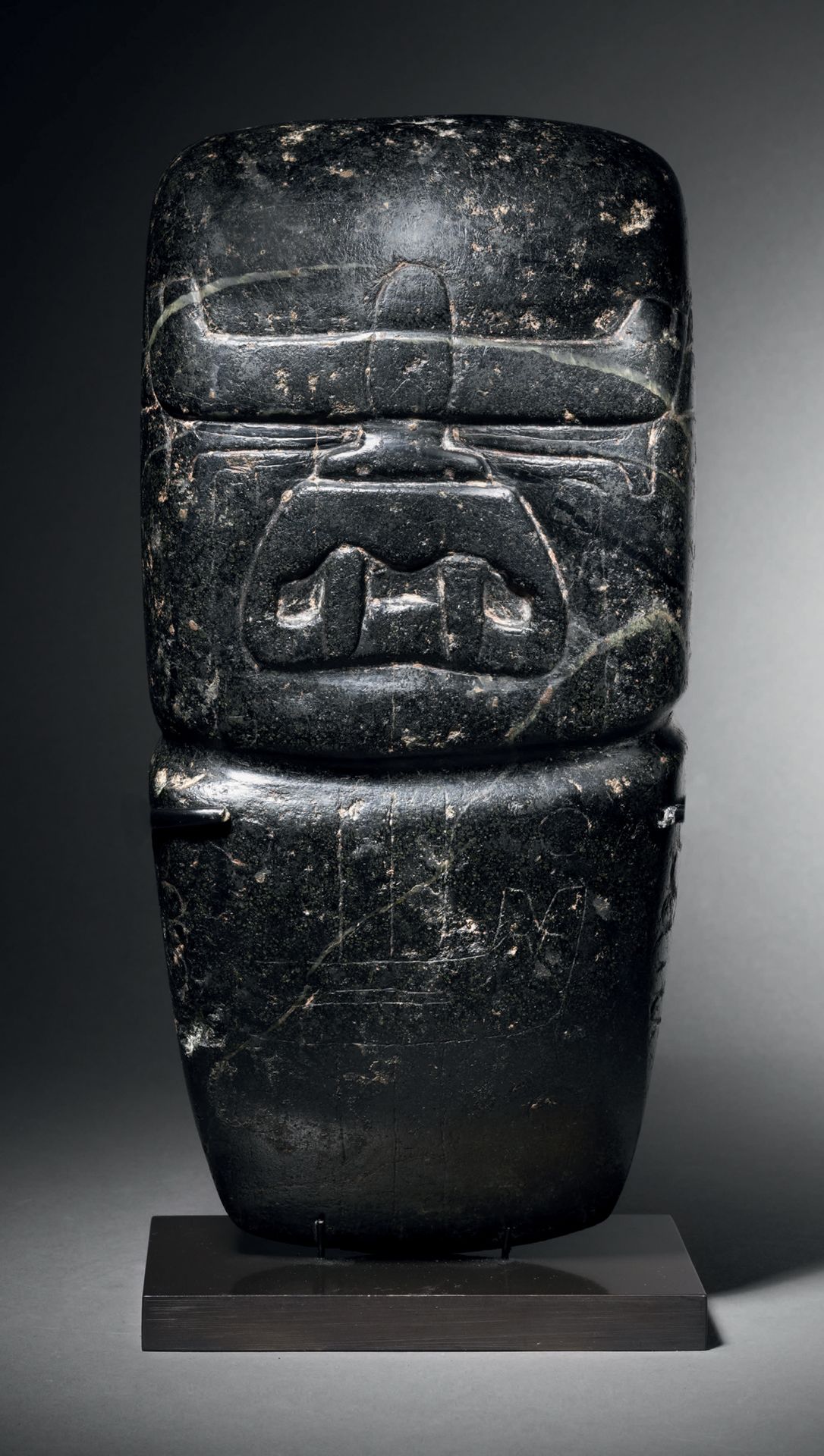Description
VOTIVE AXE with WERE-JAGUAR FEATURES Olmec culture, Mexico Middle Preclassic, 900-400 B.C.C. Dark green serpentine with light green veins H. 27 cm Olmec votive axe with "Were-Jaguar" features, dark green serpentine with lighter green veins, Mexico H. 10 5/8 in Provenance: Acquired by present owner in 2003 Marisol Stokes, Nyack, acquired by inheritance in 1989 According to a notarized affidavit, this object was part of the Olmec art collection of Mr. John A. Stokes on October 6, 1974 Former John A. Stokes collection, Nyack, USA Raul Kamffer, Mexico City, acquired 1961 Publications: Coe, Michael D. et al., The Olmec World - Ritual and Rulership, The Art Museum, Princeton University in association with Harry N. Abrams Inc, New York, 1995, p.203-204, fig. 93. Pang, Hildegard Delgado, Pre-Columbian Art - Investigations and Insights, University of Oklahoma Press, Norman, 1992, p.30, fig. 1.4b.o (drawing). Joralemon, Peter David, "The Olmec Dragon: A Study in Pre-Columbian Iconography," in Origins of Religious Art and Iconography in Preclassic Mesoamerica, Henry B. Nicholson, (ed.), Los Angeles, 1976, fig. 12-e and fig.19-o (drawings) (Published following a conference "Origins of Religious Art and Iconography in Preclassic Mesoamerica" held at UCLA University, 25-26 February 1973). Wicke, Charles R., Olmec: An Early Art Style of Precolumbian Mexico, University of Arizona Press, Tucson, 1971, p. 133, fig. 34-o (drawing). Exhibitions: The Olmec World: Ritual and Rulership The Art Museum, Princeton University, December 16, 1995 - February 25, 1996 The Museum of Fine Arts, Houston, April 14 - June 9, 1996
39
VOTIVE AXE with WERE-JAGUAR FEATURES Olmec culture, Mexico Middle Preclassic, 900-400 B.C.C. Dark green serpentine with light green veins H. 27 cm Olmec votive axe with "Were-Jaguar" features, dark green serpentine with lighter green veins, Mexico H. 10 5/8 in Provenance: Acquired by present owner in 2003 Marisol Stokes, Nyack, acquired by inheritance in 1989 According to a notarized affidavit, this object was part of the Olmec art collection of Mr. John A. Stokes on October 6, 1974 Former John A. Stokes collection, Nyack, USA Raul Kamffer, Mexico City, acquired 1961 Publications: Coe, Michael D. et al., The Olmec World - Ritual and Rulership, The Art Museum, Princeton University in association with Harry N. Abrams Inc, New York, 1995, p.203-204, fig. 93. Pang, Hildegard Delgado, Pre-Columbian Art - Investigations and Insights, University of Oklahoma Press, Norman, 1992, p.30, fig. 1.4b.o (drawing). Joralemon, Peter David, "The Olmec Dragon: A Study in Pre-Columbian Iconography," in Origins of Religious Art and Iconography in Preclassic Mesoamerica, Henry B. Nicholson, (ed.), Los Angeles, 1976, fig. 12-e and fig.19-o (drawings) (Published following a conference "Origins of Religious Art and Iconography in Preclassic Mesoamerica" held at UCLA University, 25-26 February 1973). Wicke, Charles R., Olmec: An Early Art Style of Precolumbian Mexico, University of Arizona Press, Tucson, 1971, p. 133, fig. 34-o (drawing). Exhibitions: The Olmec World: Ritual and Rulership The Art Museum, Princeton University, December 16, 1995 - February 25, 1996 The Museum of Fine Arts, Houston, April 14 - June 9, 1996
You may also like
